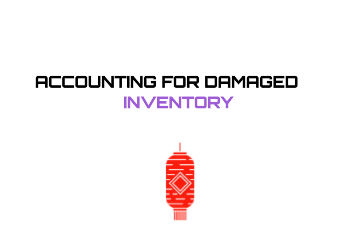In the dynamic world of business, handling inventory is a task that demands meticulous attention. Sometimes, due to various circumstances like natural disasters, mishandling, or obsolescence, inventory can get damaged. In such cases, it’s essential to know how to make a Journal Entry to Write Off Damaged Inventory to ensure your financial statements remain accurate. Let’s unravel the mystery behind this accounting maneuver with a dash of creativity and practicality.
What is Damaged Inventory?
Before diving into journal entries, let’s address the proverbial elephant in the room: What is Damaged Inventory?
- Damaged Inventory is any stock that is no longer in saleable condition.
- It includes items that have been physically damaged, become obsolete, or deteriorated.
- This can be due to a variety of reasons such as mishandling, natural disasters, or expiry.
Knowing what damaged inventory comprises is essential for making the right accounting entries.
Why Write Off Damaged Inventory?
“Why should I bother?“, you ask. The reasons are twofold:
- Accuracy: Financial statements should reflect the true value of assets. Damaged inventory is like the fallen apples in an orchard – they don’t contribute to the harvest.
- Tax Relief: Businesses might be eligible for tax deductions on losses from damaged inventory. This is akin to turning lemons into lemonade!
What Are Journal Entries?
At the heart of accounting lies the double-entry bookkeeping system. It’s like the Yin and Yang; for every action, there is an equal and opposite reaction.
- Debit: When something comes into the business.
- Credit: When something goes out of the business.
When you write off damaged inventory, you are crediting the inventory account and debiting an expense account like “Loss on Damaged Inventory.”
Steps to Write Off Damaged Inventory
Ready to wield your accounting sword? Let’s slay the dragon step by step:
- Assess the Damage: Like a detective, inspect and identify all the damaged inventory items.
- Determine the Cost: Calculate the cost of the damaged items. If you’re dealing with perishables, consider their original cost.
- Create a Journal Entry:
Debit “Loss on Damaged Inventory” (Expense Account)
Credit “Inventory” (Asset Account) - The entry looks like this:
Debit ($) Loss on Damaged Inventory
Credit ($) Inventory - Document the Details: Keep a record of the items, the reason for damage, and any relevant notes. The documentation is like the script to a movie, telling the story of what happened.
- Notify the Relevant Parties: Inform your team, partners, or insurance company (if applicable) about the inventory write-off. Sometimes it takes a village to sort out a mess!
- Update Inventory Records: Like a librarian shelving books, make sure your inventory records reflect the new levels.
- Review Tax Implications: Consult a tax professional to understand if your business qualifies for any tax relief due to inventory write-offs.
Record-Keeping Best Practices
As with any great saga, maintaining impeccable records is key to accurate accounting. Here are some best practices:
- Be Thorough: Document all aspects of the write-off, including photos of damaged items.
- Stay Organized: Keep all documents related to the write-off in one place, either physically or digitally.
- Be Prompt: Time is of the essence. Update records as soon as the write-off is completed.
- Regular Audits: Like clockwork, conduct regular inventory audits to ensure records are accurate.
Embracing Technology
In this modern era, the abacus and ledger have evolved into powerful accounting software. By embracing technology, you can streamline the write-off process:
- Inventory Management Tools: Utilize software like Quickbooks or Zoho Inventory to keep real-time records of inventory levels.
- Digital Documentation: Make use of cloud storage to securely store all write-off documentation.
- Automate: Use accounting software to automate the journal entry process, ensuring accuracy and efficiency.
- Stay Informed: Keep an eye on emerging technologies and tools that can further streamline your inventory management.
Conclusion🎓
Writing off damaged inventory is an essential accounting practice that ensures the accuracy of your financial statements and might even save you some tax dollars. Like a seasoned warrior, wield the accounting sword with precision and vigilance. And remember, in the ever-evolving world of business, adaptation and learning are your greatest allies.
Embrace technology, stay organized, and keep those records spick and span! Your balance sheet will thank you. 📈💡
